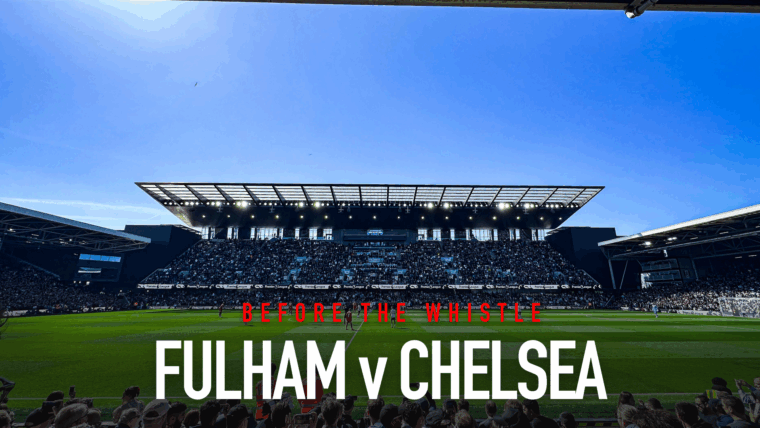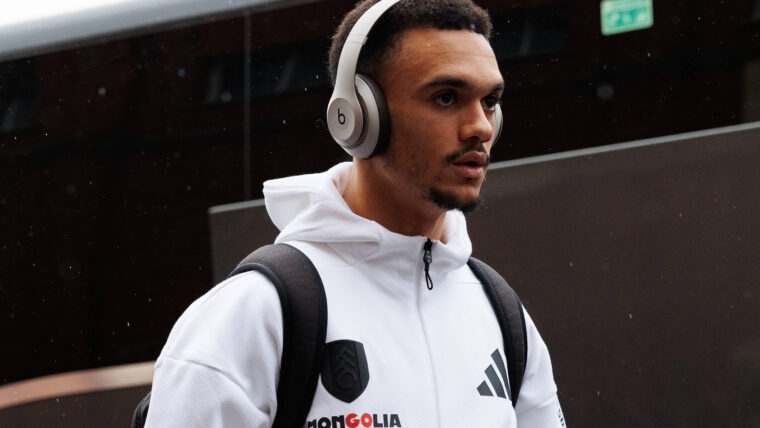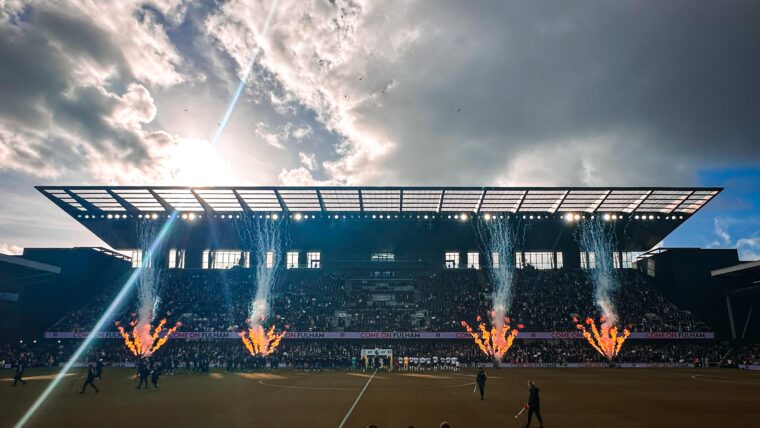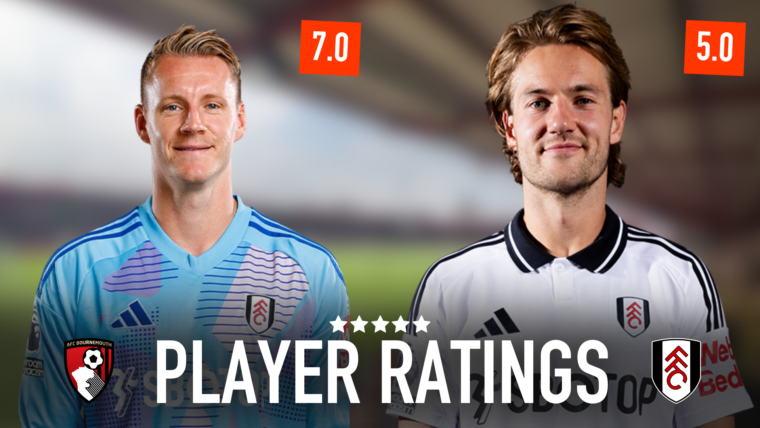Where does Silva’s Fulham rank against the best?
Written by Arthur Duke on 21st March 2022
Arthur Duke pits Silva’s boys against classic Whites sides of the past to see how they match up.
Fulham have been white hot under Marco Silva, making it easy for us all to get swept up in the hype. But how good is this current Fulham team?
I’m taking a trip down memory lane and ranking Silva’s side against four other successful Fulham teams from this millennium. First, a few ground rules: success comes from multiple factors from the team itself (on an individual level) to the managers and their imposed philosophy (a more holistic level). Additionally, both championship and premier league teams will be compared, so it’s important that the context of competition is closely monitored.
Before I begin, the scores given in this article may seem lower and harsh, as each team has a very strong case for 10 out of 10, considering their success under their respective managers. However, to truly separate the greatest Fulham eras, I must take strict and ruthless position must.
2021/2022 under Marco Silva
On 1 July 2021, Fulham appointed Marco Silva after the painfully lengthy departure of Scott Parker. Silva came in with a track record of attacking high intensity football (a concept which I have gone into at great length in a previous piece). This Fulham side very much plays in this image.
The partnership between Silva’s philosophy and Alexander Mitrovic was the catalyst for an impressive attacking record; two 7-0 historic triumphs has contributed to a tally of 90 goals in 37 Championship outings and counting – an average of 2.4 goals per game. Fulham are equally impressive at the other end of the pitch as well, conceding an average of just 0.86 goals per game.
As much as it’s painful to do, I must highlight weaknesses in this current system. Much like his attacking mentality, Silva also carried over his lack of ability to come from behind (most notably from his time at Everton), a trait that has played a huge role in (albeit just) six of our games resulting in defeat. In addition, successful teams facing Fulham this season have all deployed a low block, which demonstrates how this system is not faultless and vulnerabilities can be picked off by several defensively capable sides.
Embed from Getty ImagesOne of the standout performers this season is no doubt Alexander Mitrovic. The super Serb has netted 35 times so far this term, beating the EFL Championship record set by Toney and setting him well on his way to beating the famous tally of 42, set by Pompey’s Guy Whittingham. It’s also worth praising the other players in this dynamic front four. Harry Wilson, Fabio Carvalho and Neeskens Kebano have all been ruthless at times this season, which is a huge factor in decided this rating.
As a result, this current Fulham team gets an eight from me, a number on the balance of attacking success and an inherent weakness not being able to respond effectively to low blocks and going behind in matches. Additionally, the championship this season has strangely been inconsistent with all our promotion rivals going through rough patches and dropping large sets of points at a time. With that said, it’s hard to justify a score of nine as the automatic promotion race has (to our comfort) been far from intriguing in comparison to previous years. The fact that this season has not yet finished means we cannot assume Fulham will gain automatic promotion at a trot (which would have gone a long way to justifying a nine). But this is football, and anything can happen.
Rating: 8/10
2019/2020 under Scott Parker
It’s easy to focus on the negatives of Scott Parker’s tenure. But we can’t deny that Parker brought success during 2019/20, beating Brentford at Wembley in the process. The extent of this success (compared to teams of past and present), is flawed. Fulham came down from the Premier League the season before, and after Tony Kahn’s appearance on Fulhamish, it’s clear he wanted to push for automatic promotion places.
The signings that followed highlighted this desire. We brought in proven championship quality in Ivan Cavaliero, Anthony Knockaert, Bobby De-Cordova Reid, Harrison Reed, Harry Arter and (in the January window) Michael Hector. The club also retained Mitrovic and Cairney. Despite this ambitionm Parker’s philosophy did not get the best out of the squad in hand. Fulham constantly played within themselves and were frustratingly too defensive in games against opposition that had vulnerabilities to be exploited.
During this campaign, Fulham sustained an xG of 1.68 per game, already a huge cut from the 2.13 set by Marco Silva. Additionally, Fulham failed to score in 20% of the 46 games they played. Both numbers demonstrate the lowered attacking standards set by Parker in a team equipped with attacking talent. Despite our aim to finish in the top two, we never placed there once across the 46 games.
Embed from Getty ImagesOn an individual basis, Fulham had much more of a positive outcome. It was the back end of this season which saw Neeskens Kebano get his first proper run of games in a Fulham shirt, which showed us what he was capable of. Mitro was also able to tie the Championship scoring tally of 26 goals with Ollie Watkins, playing six games fewer. Harrison Reed was also a very impressive player whose campaign led to his permanent signing the following summer.
All things considered; Parker’s Fulham team scores a 7/10. With the squad Parker had at his disposal, he should have mounted a greater challenge for the top two. The pragmatic football we experienced that season led to frustrating results and stressful conclusions to games that could easily have been quite the opposite with a different more expressive tactical approach. Nevertheless, promotion is promotion, and a victory against Brentford secures a very respectable score for Scotty P.
Rating: 7/10
2017/2018 under Slavisa Jokanovic
This season was a pivotal era for Fulham, as we ended our four-year stint in the Championship. Prior to Slavisa’s appointment, we’d been in a dark place, battling relegation at the bottom of the Championship. It was 2017/18 that saw a return to the Premier League via the play-offs and a win against Aston Villa in front of Wembley’s white wall. It was the painful loss to Reading the season earlier that set a similar target of top two. Our final points tally of 88 was one of the highest for third place finishes, so we were unlucky not to go up automatically.
For the first chunk of the season, Fulham were without an effective number nine due to Rui Fonte’s limited impact. But it was the tail end of the season that made the headlines. After a loss to Sunderland on the 16 December, Fulham hit the nitro pedal, going on a 23-game unbeaten streak, picking up Alexander Mitrovic on loan from Newcastle along the way.
Fulham seemed to be steady in both boxes; as well as scoring an xG per match of 1.67 (similar to Scott Parker) and conceding an xG of 0.96. Jokanovic imposed a highly possession-based approach, which involved retaining the ball for extended periods of time patiently waiting for openings to exploit using wingers Ryan Sessegnon, Aboubakar Kamara, Floyd Ayite supplying (the later obtained) Mitro.
To pick apart the small weaknesses in this team, defensively, Fulham conceded more than 0.5 goals 65% of the time that season, which mostly fell in our away form. A slight improvement in this aspect may have tipped Fulham over the edge into the automatic places. In addition, the first half of the season left us Fulham fans slightly concerned with our attacking capabilities, especially considering what felt like the premature departure of Sone Aluko to Reading the previous summer.
It was the so-called ‘holy trinity’ in the middle of the park that made this team tick. Captain Tom Cairney alongside Kevin McDonald and Stefan Johansen were by far the best combination in the Championship that year, striking the perfect balance between attacking flair and defensive stability. Certainly, most Fulham fans would have loved to have seen this middle three more often in the season that followed.
Overall, Slavisa and his play-off promoted team receive a 7.5/10. This is due to the inconsistency at the start of the season coupled with the fantastic run at the end. I was torn between seven and an eight. The second half of the season was scratched into Fulham’s history books, which made us feel unstoppable week in, week out.
Rating: 7.5/10
2009/2010 under Roy Hodgson
This is the season most neutral football fans typically associate with Fulham. It was, of course, the season we reached the final of the Europa League as well as a solid 12th place in the Premier League. The most iconic moment of this season no doubt came in the Europa League second leg against Juventus, where Fulham were able to overturn a three-goal deficit to secure a semi-final tie versus Hamburg. Considering the previous struggles English teams have faced juggling Premier League fixtures with European competition, a 12th place finish is another achievement to be proud of.
Roy Hodgson’s footballing identity hasn’t changed across his 46 years of management. He tends to set up with two flat banks of four. Over the course of this campaign, this was orientated around a back pairing of Hangeland and Hughes and a midfield duo of Murphy and Etuhu. Spearheaded with two strikers up front, in this case Zamora and Gera. Hodgson used this formation to be solid and hard to break down, and this was magnified in the home form, averaging 0.79 goals conceded per game, and keeping a clean sheet in 42% of our home games.
Embed from Getty ImagesIt was our away form that left vulnerabilities in this system. Over the course of the season Fulham conceded an average of 1.63 goals per game away from home, failing to score 53% of the time. We struggled at both ends of the pitch when we weren’t on familiar territory. Considering the huge results we were able to pull at Craven Cottage against the likes of Liverpool and Manchester United, a polished up away form would have certainly been the key to a potential top half finish – and possibly a European trophy.
Juventus weren’t the only giants that fell on the way of the Europa League final. We enjoyed success against Shakhtar Donetsk, Wolfsburg and Hamburg. It’s this overwhelming success that makes it difficult to compare to other Fulham sides that haven’t competed in European competition.
As a result, Roy Hodgson’s Fulham team receives a nine. A strong Premier League finish, coupled with the greatest cup journey this club has ever seen, made it tempting to give the 2009/10 season a 10 out of 10, but with my ruthless position undertaken, the away form and falling short in extra-time during our heartbreaking defeat in Hamburg, left this team marginally short of a full house.
Ranking: 9/10
2000/2001 under Jean Tigana
My final team on the list is our Division One title-winning side, managed by Jean Tigana. This team was famous for hitting 101 points in a single second tier season. Only four other teams have been able to exceed this total, which is testament to what was a stellar team. Fulham went into the campaign with the core aim of playing in the Premier League – and they did not disappoint. Fulham placed top of the championship 45 out of the 46 game weeks, only failing to after the opening day, where just goal difference separated us and Stockport County.
Jean Tigana’s style of play was considered revolutionary. He encouraged his team to play out from the back and have confidence in the technical ability that the defensive third of the pitch had. Tigana imposed a 4-4-2 diamond formation, tasked with patient possession-based tactics magnified through mobility and pace. As expected, Fulham ran into some teething problems with this new approach to retaining the ball, however Tigana stuck to his values and imposed a culture on the players not being afraid to lose the ball in times of possession.
Tigana was even willing to shift players out of the club to make this system a reality. It wasn’t just on the pitch that changed the way that football was approached, our French manager took sport science to the next level, issuing mandatory dentist appointments once a week alongside dietary restrictions as well as other detailed approaches to maximise performance.
As mentioned earlier, Tigana used the transfer market to bring his vision to life and this certainly changed the way the team looked on an individual basis. His philosophy of position-based football centred around pace and mobility needed young exiting talent, and this was met with the signings of Luis Boa Morte and Louis Saha. Fulham fans have started to compare Mitrovic and Saha and while their goalscoring tallies are both extremely impressive, they are contrasting across multiple traits in their arsenal. Saha netted 32 times over the course of that season, a number which places very well in second tier history.
Overall, this team receives a very impressive 9.5. This season will no doubt go down as a season that transformed the club, kickstarting a long period in the Premier League. Fulham’s footballing culture was a pioneer of its time and evolved and influenced teams in and around Fulham’s size to be more expressive with the ball. 101 points was an extremely impressive points tally and isn’t achieved without being a level above the competition that year.
Ranking: 9.5/10



